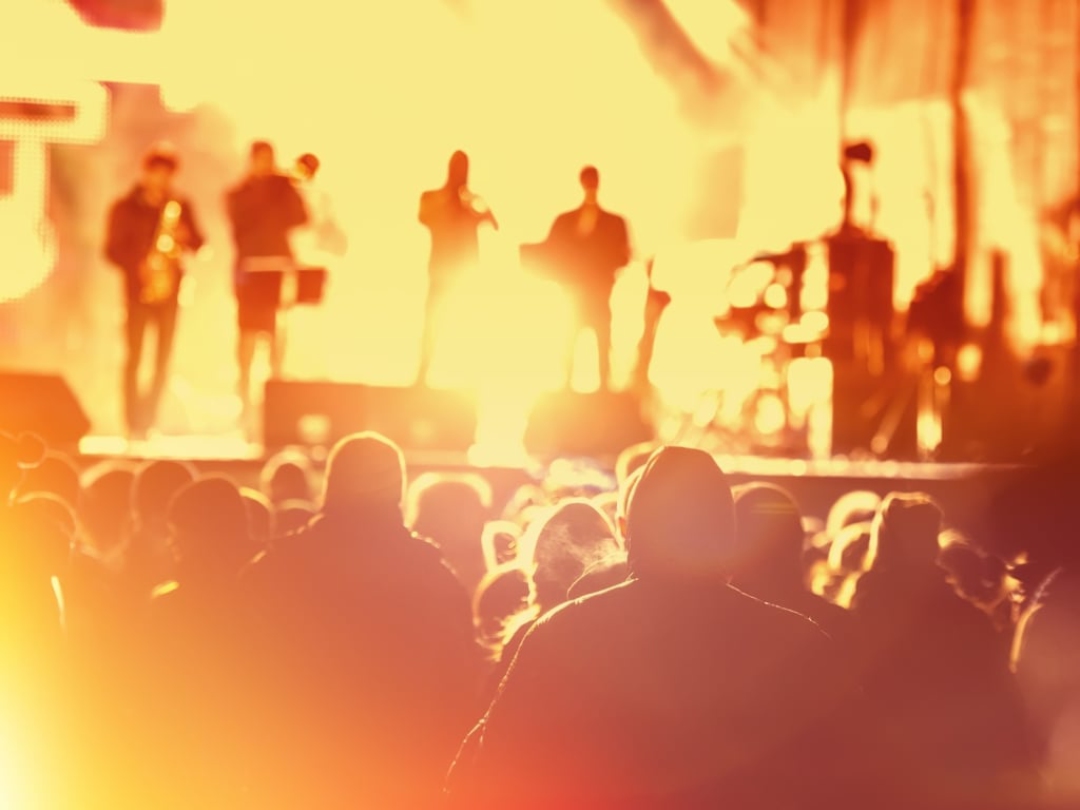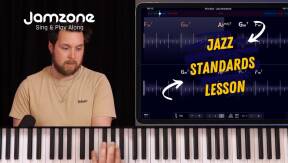James Brown, Apollo, New York, October 24, 1962
In his 1962 concert, James Brown, already well known in the world of R'n'B and soul, attained new heights. At his best, Brown offered a raging public a fiery and energized performances, giving fully of his body and soul, alternating without difficulty between slow and frenzied songs. The rhythm, the brass section and the Famous Flames choristers contributed to his vivacious and often contagious on stage energy.
Bob Dylan, Newport Folk Festival, July 25, 1965
On this day in 1965 Bob Dylan incarnated rock'n'roll. Announced as "the man who popularized folk music amongst the American public by bringing it poetry" surprised the organisers and festival-goers arrive with all electric equipment. To the dismay of the audience and even some unwanted heckles, he revisited his folk songs and proposed new ones. Several fans were baffled, but overall welcomed the new rock version with enthusiasm.
The Beatles, Shea Stadium, August 15, 1965
This was the first rock concert organized in a stadium. At the time, the audience of 56,000 set a record. The Beatles arrived by helicopter, to escape their hysterical fans who screamed so loudly that the musicians themselves had to plug their own ears.
Jimi Hendrix, Monterey Pop Festival, June 18, 1967
It was Paul McCartney who proposed to the an unknown guitarist named Jimi Hendrix to play at the Monterey Festival. The guitar hero delivered his most bewitching performance by performing with his teeth, playing riffs behind his head, all with shocking ease.
By the end of the set, Jimi Hendrix was on fire! During a wild and sensual version of Wild Things, he dropped his guitar, kissed it a goodbye and sprinkling it with gasoline, ignited the instrument in flames. On his knees, arms raised, Hendrix seemed to cast a spell willing the guitar to rise. Getting to his feet, he suddenly grabbed the neck of the fiery guitar and swung it crashing to the ground the guitar and next the amps before launching jumping into the audience, who not surprisingly, stood fixed with in awe and perplexity. "It was like a sacrifice. I love my guitar," the guitarist later admitted.
Johnny Cash, Folsom Prison, January 13, 1968
Wrestling himself with questions of redemption and forgiveness, Cash, a.k.a. the man in black, played in front of a thousand prisoners during a dark and heavy ambiance. This particular public, for fear of backlash, dared not display their excitement and sat throughout the concert in silence.
The Rolling Stones, Hyde Park, London, July 5, 1969
Three days after the drowning death of Brian Jones, who had left the group just a month earlier, the Rolling Stones, all dressed in white, gave their first concert in two years in front of 250,000 spectators. At the beginning of the set, Mick Jagger read Percy Bysshe Shelley's poem "Adonais" aloud, in tribute to Jones, before an emotionally charged release of white butterflies. The entire concert took place in a turbid and somewhat dreamlike atmosphere, through which the grief over the loss of the bands former member was felt, despite the dynamism The Stones, the Mick Taylor’s solos, presentation of the new guitarist and the picturesque dances from Jagger.
Woodstock, August 15-18, 1969
Woodstock has become legend. The festival was meant to be nothing more than a nice gathering of hippie music lovers in a good-natured atmosphere. But when over a half million attendees showed up to party, the festival quickly became an uncontrollable hippie heaven of mud, drugs, rock'n'roll and, yes, fried chickens thrown from helicopters...
The historic event emerged from chaos. Among the highlights of the festival: Richie Havens, as an opening act, forced on an increasingly impatient public that waited for three hours for other singers to arrive, delayed by traffic. He was forced to exhaust his repertoire of covers and to repeat several songs, but he did so with such care and attention that and his name went down in the books thanks to this performance. The public also discovered a young Joe Cocker who delivered an incredible version of The Beatles' With A Little Help Of My Friends. On Saturday, Carlos Santana, only 22 years old at the time, is still under the influence mescaline (psychedelic drug) when he took the stage, pushed to play quickly to make up for lost time due to bad weather. The group delivered a legendary performance nonetheless. The public danced in the mud, as the group began a legendary rendition of "Soul Sacrifice." The drummer, 19-year-old Michael Schrieve, the youngest of the festival, unleashed his talent and was met with awe.
Another moment for the books happened at the end of the festival: the performance of Jimi Hendrix. At dawn, the "voodoo child" perked up a lethargic public’s ear with his rendition of The Star Spangled Banner. His disintegrated and distorted version of the American anthem, was one of the major moments of the festival and became one of the symbols of the fight against the war in Vietnam.
Led Zeppelin, Earl's Court, London, May 25, 1975
A total of five dates were played at Earl's Court in May of ‘75. On the 25th however, it lasted for four hours. John Bonham performs a remarkable 20-minute drum solo on Moby Dick; a song that Plant sang by announciating the word "dick" with provocation. Page's solo on Stairway to Heaven also marked history.
Pink Floyd, Earl's Court, London, August 4-9, 1980
This was the first concert of The Wall tour in the UK. For six nights consecutively, Pink Floyd captivated the attention of 18,000 spectators who attended, unbeknownst to them, a real show. While images animated the stage’s background, fighter planes soared over head, an animated puppet of a monstrous teacher, a giant inflatable black pig ... and, of course, on stage, the famous wall, constructed brick by brick and song by song. The last brick is laid during Goodbye Cruel World. After a fifteen-minute break, the group played behind the wall, hidden from the audience. By the end, the bricks collapsed one by one, with total destruction of the wall in a terrible crash that shook the seats of the spectators
Live Aid, July 13, 1985
Under the leadership of Bob Geldolf, leader of the Boomtown Rats, came the largest charity and musical operation in the world, Live Aid with a goal of raising funds to relieve famine in Ethiopia. Broadcast globally to 1.5 billion viewers with simultaneous performances on two continents in Philadelphia and London (Phil Collins even performed in both cities on the same day!), the event will brought together nearly 70 artists including Paul McCartney, Led Zeppelin, Bob Dylan, David Bowie, Neil Young ou encore U2.
Queen, Wembley Stadium, London, July 11-12, 1986
With the largest lighting installations that any stadium has ever known, a stage measuring 50x15 meters (roughly 164 x 50 feet), speakers of 500,000 watts, several big rigs to carry the group's equipment, countless technicians ... this concert made history. The group communicated impressively with the 72,000 attendees, who clapped their hands in a sync to "Radio Ga Ga" or "We Will Rock You". Later, the musicians themselves acknowledged to have accomplished a real feat.



